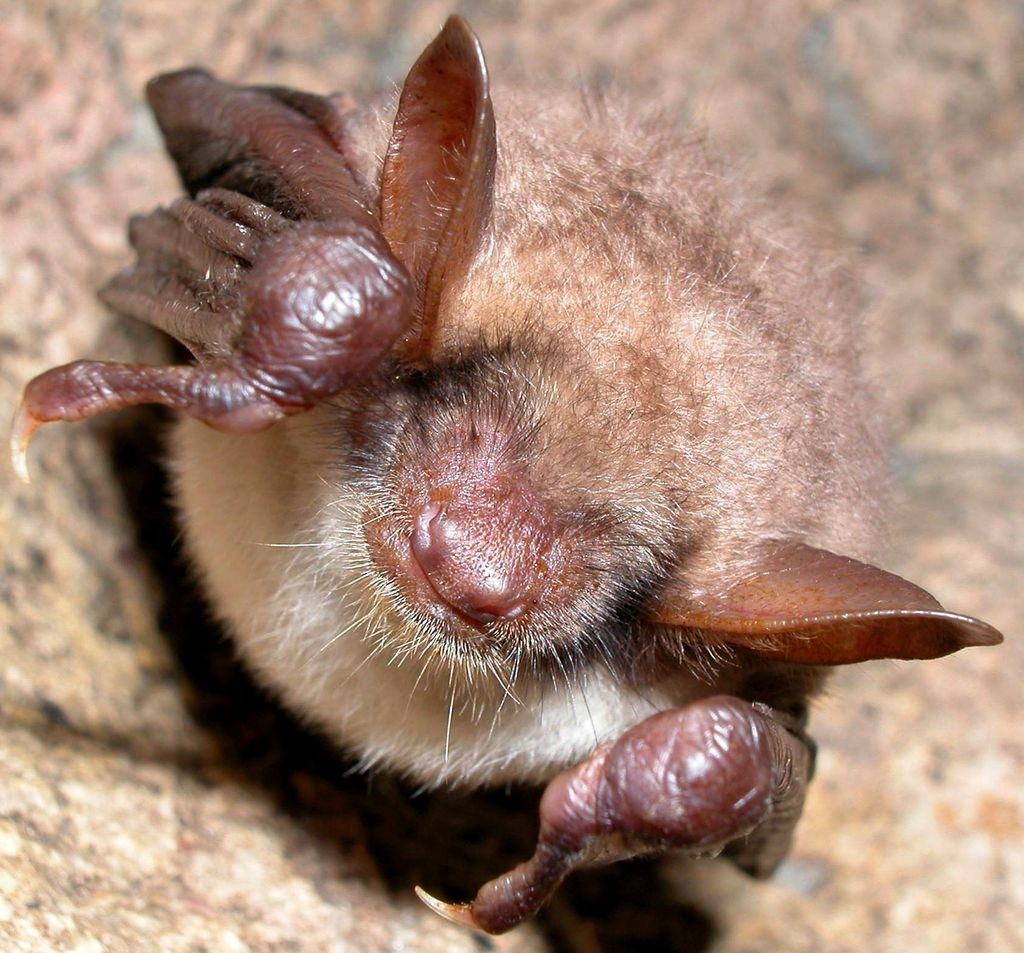Greater mouse-eared bat
A species of Mouse-eared bats, Also known as Mouse-eared myotis Scientific name : Myotis myotis Genus : Mouse-eared bats
Greater mouse-eared bat, A species of Mouse-eared bats
Also known as:
Mouse-eared myotis
Scientific name: Myotis myotis
Genus: Mouse-eared bats
Content
Description People often ask General Info
 Photo By Reszegi Attila , used under CC-BY-SA-3.0 /Cropped and compressed from original
Photo By Reszegi Attila , used under CC-BY-SA-3.0 /Cropped and compressed from original Description
Myotis myotis is a large bat with a long, broad muzzle and big, long ears. The body's dorsal side is brown to reddish-brown, while the ventral side is dirty white or beige. The tragus forms half of the ear, with a small black tip in most individuals. Wing membranes are brownish in colour. The Greater mouse-eared bat is relatively large for a member of the genus Myotis, weighing up to 45 grams (1.6 oz) and measuring 8 to 9 cm from head to tail (a little larger than a house mouse, Mus musculus), making it one of the largest European bats. It has a 40 cm wingspan, with a forearm length of 6 cm, and a 4 to 5 cm long tail. The average lifespan of a greater mouse-eared bat is 3–4 years, although particular individuals have lived up to 14 years. 
People often ask
General Info
Lifespan
3-14 years
Diet
Greater mouse-eared bat's diet primarily consists of small insects. Although adaptable, they exhibit a preference towards moths, beetles, and flies. Foraging typically occurs in close proximity to water bodies.
Appearance
Greater mouse-eared bat is a medium to large-sized bat with long, soft, dark brown to reddish fur. Its wingspan can reach up to 40 cm. This species is characterized by the presence of a bare, horseshoe-shaped patch of skin around the nostrils. Its ears are large and pointed. There are no significant variations in appearance between sexes, age groups, or subspecies.
Behavior
Like its relatives, the greater mouse-eared bat is an insectivore, feeding on various arthropods; however, unlike many bats, it does not capture its prey by using echolocation in flight. Instead, it gleans it from the ground, locating prey passively by listening for the noises produced by insects such as carabid beetles, centipedes and spiders. As a result, it uses echolocation only for spatial orientation, even if it emits ultrasound calls when approaching prey. Myotis myotis forages in open deciduous woodlands, forest edges and pastures. It roosts underground throughout the year, although roosts in Northern Europe are also located in attics and lofts of buildings. More rarely, small tree-based colonies also occur. Colonies on Mediterranean islands such as Mallorca usually have up to 500 individuals, though colonies of over 4.500 bats have been found in continental Europe. It has been known to roost with other bats, such as Myotis capaccinii and Miniopterus schreibersi. In mainland Europe, Myotis myotis performs annual dispersions of up to 200 km in spring, although most are only of 10 km or so. As with most vespertilionid bats, the greater mouse-eared bat exhibits slight sexual dimorphism, with females being slightly larger than males. Mating takes place in autumn, with females giving birth from May to June. Each female has 1-2 pups, which are carried around for about 45 days. During this period, females form nursery colonies from which males are excluded. The frequencies used by this bat species for echolocation lie between 22 and 86 kHz, have most energy at 37 kHz and have an average duration of 6.0 ms. 
Population
Stable
Scientific Classification
Phylum
Chordates Class
Mammals Order
Bats Family
Evening birds Genus
Mouse-eared bats Species
Greater mouse-eared bat